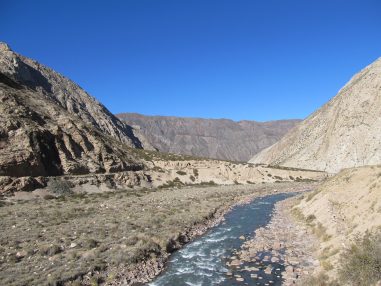New Practices for Zircon Sampling
December 3, 2018

A new study led by The University of Texas at Austin Jackson School of Geosciences suggests that scientists may be able to better leverage zircon data to understand landscape evolution.
The improvements involve considering a suite of factors that can skew zircon geochronologic data and interpretation of the origin of sediments.
The study, published on Dec. 1, 2017, in Earth and Planetary Science Letters, focused on a method called detrital zircon U-Pb (uranium-lead) geochronology.
Zircon is an ideal mineral to trace landscape evolution because it is found in most crustal rocks, is very durable (harder than diamond), and contains three isotopic clocks (chronometers) that geoscientist can utilize. The researchers found that estimates of landscape erosion and sediment dispersal could be improved by taking several factors into account:
- Bedrock materials erode at different
rates. This means sediment in rivers
will be disproportionately enriched
in zircon grains derived from weaker,
erodible bedrock sources.
- Zircon fertility is a term that
indicates how many zircons are in
a bedrock source region. Materials
that produce less zircons can be
underrepresented in a study unless
this issue is accounted for.
- Some zircons come from material
that has been recycled over time.
That means the zircons could contain
complex signatures from multiple
erosion events from different rocks.
Tomas Capaldi, a Ph.D. student in the Jackson School’s Department of Geological Sciences, led the study by collecting zircon grain samples from modern river watersheds in the Andes Mountains where the sediment sources and drainage networks are well known.
“We’re exploring how we can use sediment from modern rivers to calibrate ourselves for the ancient sedimentary record,” Capaldi said.
The study found that erosion patterns were reflected more accurately when sampling larger river systems, which receive sand from the entire region and record the overall erosion of the Andes.
The findings are important because thousands of studies each year depend on detrital zircon U-Pb geochronology, said Jackson School Professor Brian Horton, Capaldi’s advisor and a coauthor on the paper.
The good news is that this can be largely accounted for by researchers in the field and lab, said co-author and Jackson School Professor Danny Stockli.
“You might have to take some of these complications that Tomas points out, maybe even leverage them, to obtain a better understanding of longterm landscape evolution,” he said.
Back to the Newsletter